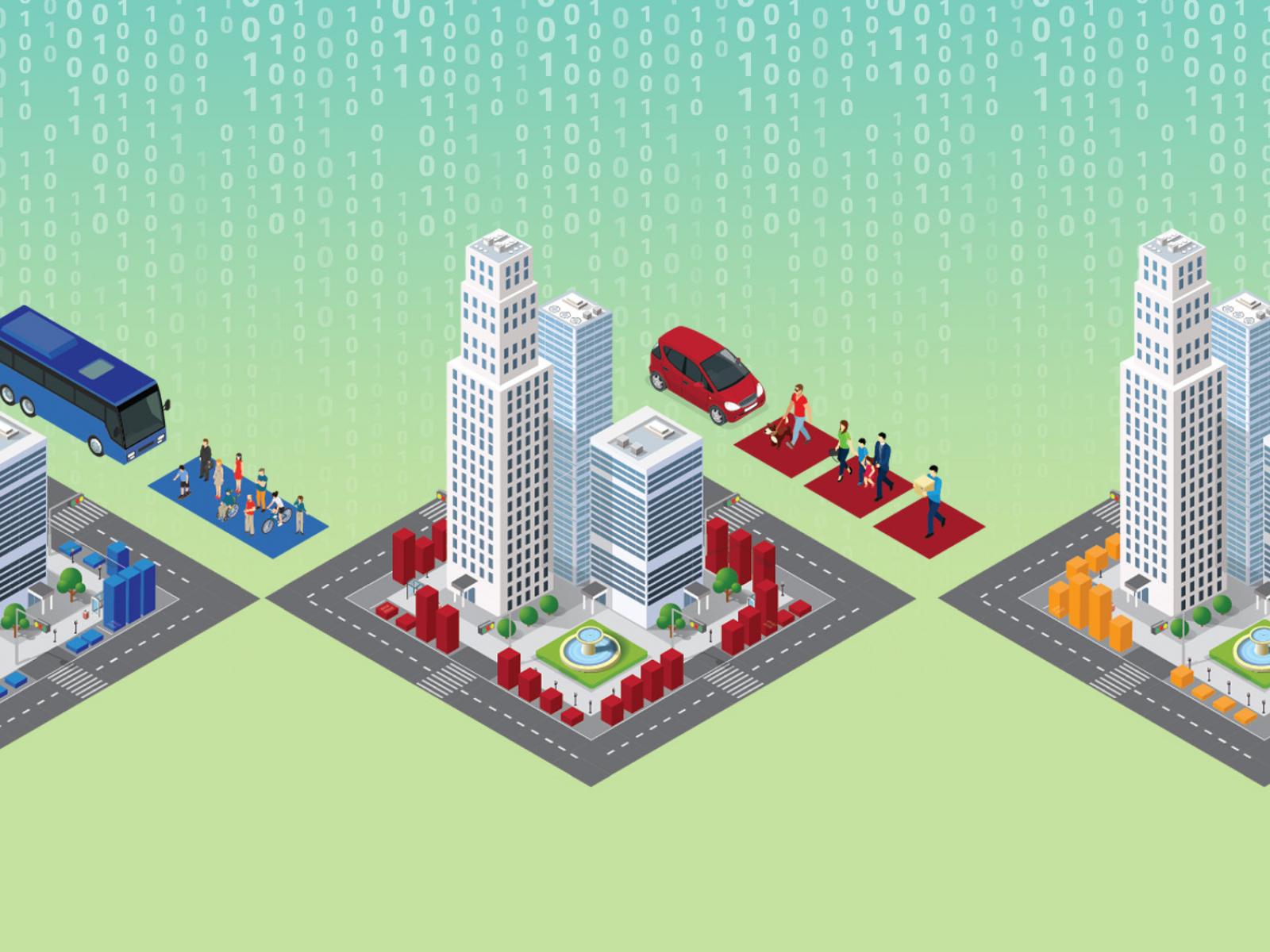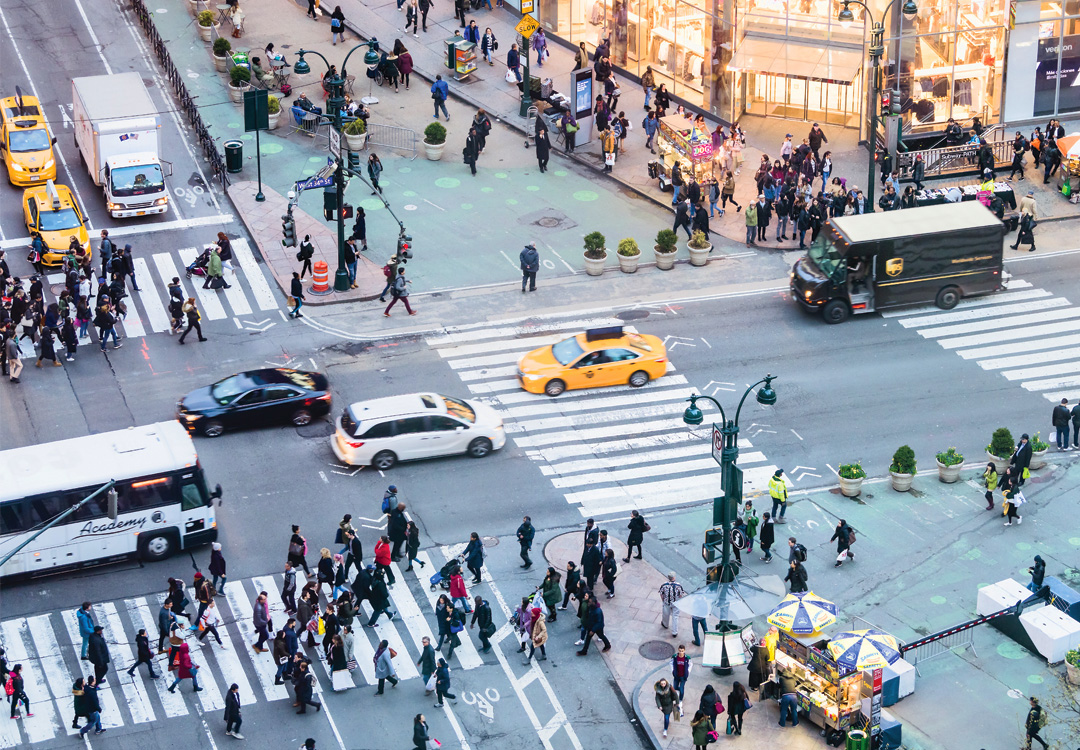Dynamic Curbs in Urban Settings
Better planning to reduce curbside congestion and increase usage efficiency

PNNL is addressing curb usage management by developing a city-scale dynamic curb use simulation tool and an open-source curb management platform.
(Composite image by Cortland Johnson | Pacific Northwest National Laboratory)
